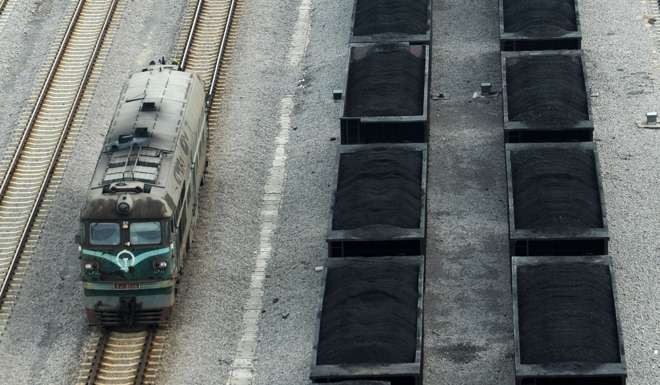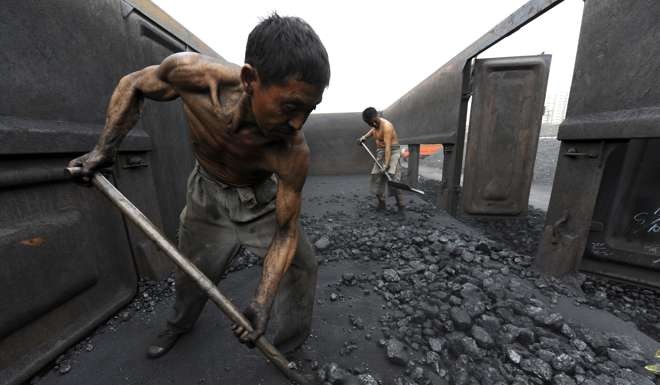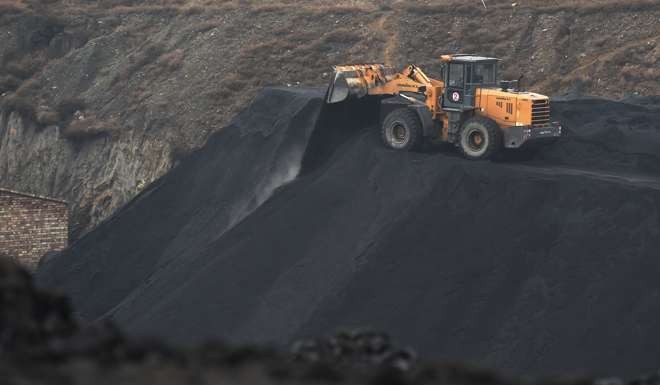
Winter is coming: China scrambles to boost coal output after production cuts work ‘too well’
Beijing eases controls as the cold season looms and fuel demand peaks
China’s efforts to shrink its bloated coal industry may have worked too well, too quickly.
Prices have surged more than 50 per cent this year after the government ordered mining companies to cut output to ease a glut and help lift the industry out of crisis.
Now, as winter looms and fuel demand peaks, the consumer and producer of about half the world’s coal is having to relax some of those controls, or face even higher fuel costs, according to analysts at Citigroup and ICIS China, as well as the China Coal Transport and Distribution Association.
“The extent of the production cuts earlier this year has been too severe,” said David Fang, a director at association.
“Now the government is trying to fix the problem by relaxing some controls on output, but there is only limited time now before the winter arrives.”

The government earlier this year unveiled efforts to revitalise the coal industry and throw a lifeline to mining companies, many of them government-controlled, who struggled to repay debts as prices of the fuel used in power stations fell to the lowest in about a decade amid excess supply.
President Xi Jinping’s administration ordered mining companies to lower output to the equivalent of 276 days of production, from the standard 330 days.
As part of the country’s broader “supply side structural reform”, regulators went after the industry’s massive overcapacity, cutting about 150 million tonnes of unneeded capacity as of August, out of a target of 500 million tonnes by 2020.
However, the reforms may be a victim of their own success.
Output fell more than 10 per cent in the first eight months of this year, pushing up domestic prices and helping imports, including coking coal used to make steel, rise to the highest level since December 2014.
Now, policymakers are trying to fine tune the approach and have intensified efforts to bring some production back.

One week after allowing some mining companies to raise output by 500,000 metric tonnes a day last month, the National Development Reform Commission, the country’s top planner, met again to discuss the possibility of increasing it to one million tonnes.
“We need to balance our efforts in cutting overcapacity and ensure stable supply,” the NDRC said in a statement on September 23.
“The severe overcapacity in the coal sector hasn’t changed. We shouldn’t weaken our efforts in reducing the glut. Otherwise, it will be hard to get the coal industry out of difficulty.”
The policy of capping mining output at the equivalent of 276 days of production has also been relaxed for some producers.
The commission is also allowing selected “advanced” and “high efficiency” mining companies to raise production from October 1 to December 31, the China Economic Herald reported last Thursday, quoting an unidentified NDRC official.

Benchmark coal prices are soaring. The cost of deliveries at the port of Qinhuangdao rose last week to about 565 yuan (US$84.70) a tonne – the highest level since January 2014, while Bohai Rim prices are up more than 50 per cent from the beginning of the year.
And the rally may not be done. Thermal coal could rise 10 per cent more by the end of the year because of winter demand, Deng Shun, an analyst at ICIS China, said before the latest efforts were unveiled to ease supply restrictions.
The new policies may add as much as an extra 1.4 million tonnes to the daily coal production boost, Citigroup analyst Jack Sheng wrote in an October 2 report.
Prices may “normalise” this quarter and average 475 yuan a tonne in 2017, he wrote.
If supply is not allowed to expand over October and November as it normally does, China may have to suspend loss-making coal-fired power generating capacity because of high prices or a lack of coal, Morgan Stanley analysts, including Tom Price, wrote in a September 26 report.
A pre-winter supply surge will be bearish for prices, they wrote.
“China will allow enough mines to operate at higher utilisation rates to rebalance the market,” Andrew Driscoll, head of resources research at CLSA, said.
“Production quotas don’t usually work, but I think China will get this right. You don’t want to bet against Beijing.”

